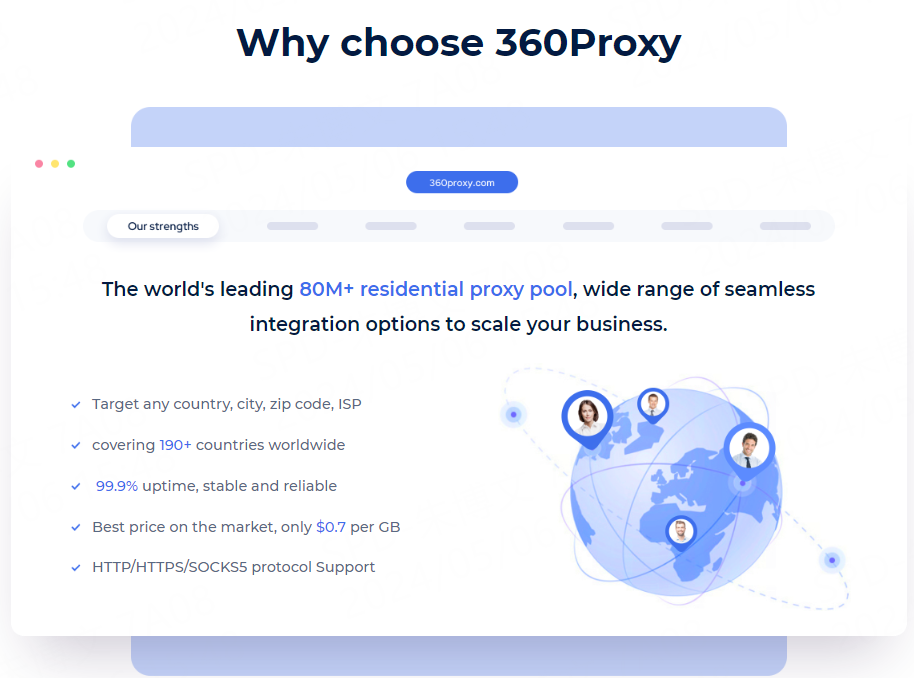Introduction
In the vast ocean of Internet technology, Web proxy and cross-domain resource sharing (CORS) play a crucial role. They are like two indispensable engines driving the development of network security, web loading speed and application functionality. This article will take an in-depth look at these two technologies and reveal their important position in Internet technology for readers.
Web proxy: A solid barrier to protect network security
A Web proxy, also known as a network proxy, is a server that plays an important role in a network. It intercepts HTTP requests and responses, acting as a middleman. As a bridge between client and server, Web proxy can not only improve the speed of network access, but also provide a strong network security guarantee for organizations. It intercepts and inspects all incoming and outgoing data traffic, effectively preventing potential cyber threats. At the same time, Web proxies also provide many additional capabilities, such as data compression, caching, and logging. These features not only improve network performance, but also help organizations better manage and monitor their network activity. Under the guard of the Web proxy, the internal websites of enterprises, schools and libraries can run stably, ensuring the safe transmission and storage of information. By deploying Web proxies, these organizations are able to implement more refined network access controls to better protect their sensitive data and resources.
Cross-domain Resource sharing (CORS) : A bridge that breaks down restrictions and enables resource sharing
Cross-domain Resource sharing (CORS) is a mechanism to solve the limitation of browser same-origin policy. The same-origin policy is a security measure adopted by browsers to prevent malicious scripts from harming users' privacy data. However, in the development process, the restriction of the same origin policy often brings a lot of inconvenience to the developer. To break this deadlock, CORS was born. As a W3C specification, CORS gives servers the flexibility to specify which resources can be accessed by other domains by setting response headers. The core of this mechanism is that the server sends a response header that contains a field called "Access-Control-Allow-Origin". This field can specify a domain name or other identifier that allows access to the resource. When the browser receives such a response, it checks the value of the field and allows cross-domain requests if the allowed domain names match the requested domain names; Otherwise, the browser will reject the request and display an error message.
The emergence of CORS greatly improves the flexibility and extensibility of applications. In the traditional request mode, the communication between different domain names is often hindered due to the restriction of same-origin policy. However, by using CORS, developers can now easily enable data sharing and functional interaction between different domains. This mechanism not only simplifies the development process, but also provides a more convenient solution for creating cross-domain collaboration and API service development. Today, CORS has become an indispensable part of the front-end separation architecture, and is widely used in scenarios such as API interface calls. It enables applications to better integrate and utilize resources from different sources, which improves application functionality and user experience.
Peroration
Web proxy and cross-domain resource sharing (CORS) are undoubtedly two bright pearls of Internet technology. They play a pivotal role in network security, web page loading speed and application functionality. By understanding these two concepts in depth, we can not only better understand the operating principles of Internet technology, but also give full play to their advantages in practical applications. Looking forward to the future, with the continuous evolution and innovation of Internet technology, we have reason to believe that Web proxies and CORS will be widely used and continue to innovate in more fields. They will continue to inject more vitality and security into human life and work, and promote the continuous development and progress of Internet technology. With their joint efforts, the Internet will have a better and safer future.
360Proxy provides 100% real residential proxy resources, covering 190+ countries and regions, and 80M+ residential IP resources. To meet the different needs of users, such as media account management, ESTY and SEO, 360Proxy is a good assistant that can provide huge help!

 Username: Password
Username: Password
 Whitelist IP
Whitelist IP
 Proxy Manager
Proxy Manager
 Google Chrome Extension
Google Chrome Extension





























 Dashboard
Dashboard Sign Out
Sign Out






























 USA
USA France
France Brazil
Brazil Vietnam
Vietnam Spain
Spain









